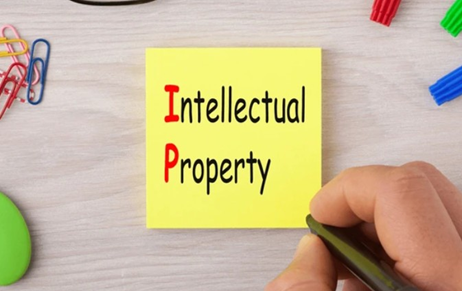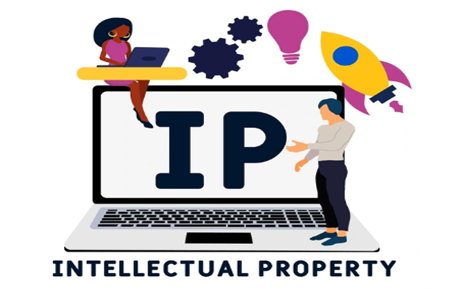Today, in the knowledge-based economy, ideas are not just vague concepts; they are powerful business…
The Role of IP Licensing in Technology Transfer and Innovation
Licensing is fundamental to a knowledge-based economy, facilitating technology transfer across all sectors while promoting innovation. With this knowledge-based transition, IPRs provide significant protection for innovations while fostering dissemination. Licensing agreements afford inventors, researchers, and companies an avenue to exploit their intellectual assets in return for allowing others to use their patented technologies, trade secrets, trademarks, or copyrights. Such exchange stimulates R&D collaboration, entrepreneurship, and global technology advancement.
In this interconnected world, IP licensing cuts across the legal sphere to become a strategic arm geared towards commercialization of innovative technologies. These apposite agreements bridge the existence of a disconnect between the research institutions and the industries, ushering in the latest innovative concepts from the laboratory into the market. From pharmaceuticals to AI and renewable energy technologies, IP licensing continues to act as a catalyst for innovation and technological advancement across industries.
IP Licensing and Technology Transfer Defined
IP licensing entails a contract between the owner of an intellectual property asset (licensor) and another party (licensee) granting permission to use the IP under specified terms and conditions. These agreements may be exclusive or non-exclusive, remain in different varieties of property types, and include patents, copyrights, trademarks, and trade secrets. Licensing can take various forms, including royalty-based agreements, cross-licensing, or outright sales.

On the flip side, technology transfer is defined as basically transferring technology, be it hardware or software, from one entity to another, i.e., from a university or research institution to business and industry. Thus, this technology transfer process is essential in linking the invention with commercialization. In this regard, IP licensing serves as a major means of technology transfer, such that the licensing allows for research results in novel technologies to be commercialized much more effectively and reach the market.
An apt example of technology transfer through IP licensing is the pharmaceutical sector, where research institutions license drug patents to biotech firms or large pharmaceutical companies for further development and commercialization. Without IP licensing, many ground-breaking medical treatments and innovations would sit in their research cabinets without ever being accessed by patients who need them.
Stimulating Innovation Through IP Licensing
IP licensing is instrumental in stimulating innovations that leverage partnerships and investments into R&D. Without a strong IP system, no one would be willing to finance any costly research project for business opportunities, as they would be exposing their proprietary knowledge with nothing in return. So there is a window of opportunity for more use of licensing agreements through creating incentives-theories legal and economic-that stimulate activity in technology innovation.
First of all, licensing entitles a startup and small businesses to use developed technology without developing it from point zero. Most technologies companies have incorporated university patents or other third parties’ IP licenses to realize their products. For example, Google had the early search algorithm based on the technology that Stanford developed; hence the likeness for licensing it to Google for further scaling.
Large corporations, accordingly, open themselves to newer technologies through the licensing of smaller companies or research institutions, thus assuring a smaller flow of ideas into their product pipelines. Companies such as IBM, Qualcomm, and Microsoft have extensive patent portfolios, almost all being internally unused but otherwise licensed by a third party, facilitating industry-wide innovation.
Cross-licensing is essentially a condition under which firms share means invested in developing new products in joint venture or new product development initiatives, which contribute collaboratively to innovation. Firms sanctioned to an industry such as semiconductors and telecommunications usually have a cross-licensing agreement with one another to avoid litigation over patent infringements while conducting joint research in the application or development of a technology-hence example such as the major smartphone manufacturers with IP-sharing agreements developing more advanced and new mobile devices.
Notably, IP licensing accelerates open innovations as it permits researchers and businesses to work on technology exchange under a formalized agreement. Take for example open source software licenses, they enable the rapid development of technology like Linux and Android operating systems, producing a community of collaborative development among developers and tech businesses.
The Economic Impact of IP Licensing
The economic effects of licensing IP are significant, extending beyond revenue generation to job creation and industry growth. Licensing revenues have been consistently increasing, reflecting the growing recognition of intangible assets by the global economy, according to the World Intellectual Property Organization (WIPO).
Licensing in intellectual property is also a very good revenue source for companies. Licensing brings billions of dollars annually to many big technology companies, including IBM, Qualcomm, and ARM Holdings. In fact, much of the revenue generated by Qualcomm comes from licensing its patents directly related to wireless communication technologies to mobile phone manufacturers.
There is knowledge transfer from developed nations to developing countries through licensing of IP, and all these do not stop at profits made from these corporate syndicates. The developing economies have less research-and-development capacity compared to advanced nations but can indeed still augment their industrial capacity through licensed footprint development. India is a case in point. The success of its pharmaceutical industry can partly be attributed to licensing agreements through which the local companies were able to manufacture generic versions of patented drugs, hence enabling the widespread and cheaper availability of critical medicines.
Moreover, licensing becomes one of the most important factors of public-private partnerships, in which government-funded research institutions work with private companies to commercialize various forms of new technologies. In universities and research centers worldwide, the revenues generated through public and private partnership licensing in patent and license agreements with industry players, further fueling scientific advancements. The Massachusetts Institute of Technology (MIT), for example, has been at the forefront of technology transfer, with many spin-off companies emerging from its licensed research.
Challenges in IP Licensing and Technology Transfer
Like everything else, IP licensing and technology transfer have their own merits and demerits. One of the primary concerns is how difficult it may be to negotiate fair and transparent licensing agreements. Patent holders often struggle with determining appropriate royalty rates, and licensees experience barriers with regard to the access cost of crucial technologies.
Another concern is represented by patent thickets, which consist of overlapping patents that bring in legal barriers that prevent innovations from being realized. Segments such as biotechnology and semiconductor industries find it difficult to walk through these thick patent forests, and end up spending much more money fighting in courts than that which they gain from innovations.
In addition, differences in IP laws in countries have caused legal uncertainties in cross-border licensing agreements. Although developed countries have established almost well-enforced IP mechanisms, developing countries are riddled with weak IP protection, piracy, and counterfeiting concerns that make it difficult to comply with licensing agreements.
Policy makers, businesses, and research institutions should therefore be tomorrow’s converged world in the promotion of global harmony in terms of the IP framework to suit the interest of inventor-bus that no harm inflicted on the business’s interest should ground consumer interests in the new framework exacerbated. Proposals that go through patent pooling, standardized licensing terms, and enlisting measures to further enhance transparency in IP transactions would help to mitigate these challenges and further advance an inclusive innovation ecosystem.
IP licensing is the main driver of technology transfer and innovation, from new ideas passing through commercialization to co-collaboration within industries. It enables easy accessibility, sharing, and monetization of intellectual property by startups, researchers, and corporates, speeding up technological advancement as well as economic growth. All the issues highlighted can be looked into strategically regarding licensing agreements, as well as formulating strong-proof IP-protection mechanisms, let alone cooperation around the globe, which will improve the feasibility of using technology transfer for opening up new horizons to innovativeness.
The role of IP licensing will be kept on growing as we inch toward an increasingly digital and knowledge-based economy. It will be a harbinger of the future for industries from healthcare and artificial intelligence to renewable energy and beyond. A well-balanced approach to licensing can make sure that innovation accrues to society as a whole, thus driving sustainable progress in the years to come.
References
- World Intellectual Property Organization (WIPO). (2023). The Global Innovation Index 2023. Retrieved from https://www.wipo.int/
- Chesbrough, H. (2006). Open Business Models: How to Thrive in the New Innovation Landscape. Harvard Business Review Press.
- Mazzucato, M. (2018). The Value of Everything: Making and Taking in the Global Economy. Penguin Books.
- Arora, A., Fosfuri, A., & Gambardella, A. (2004). Markets for Technology: The Economics of Innovation and Corporate Strategy. MIT Press.
- Lemley, M. A. (2005). Patents and Innovation: Understanding the Role of Intellectual Property in Technological Development. Stanford Law Review, 58(2), 611-668.



